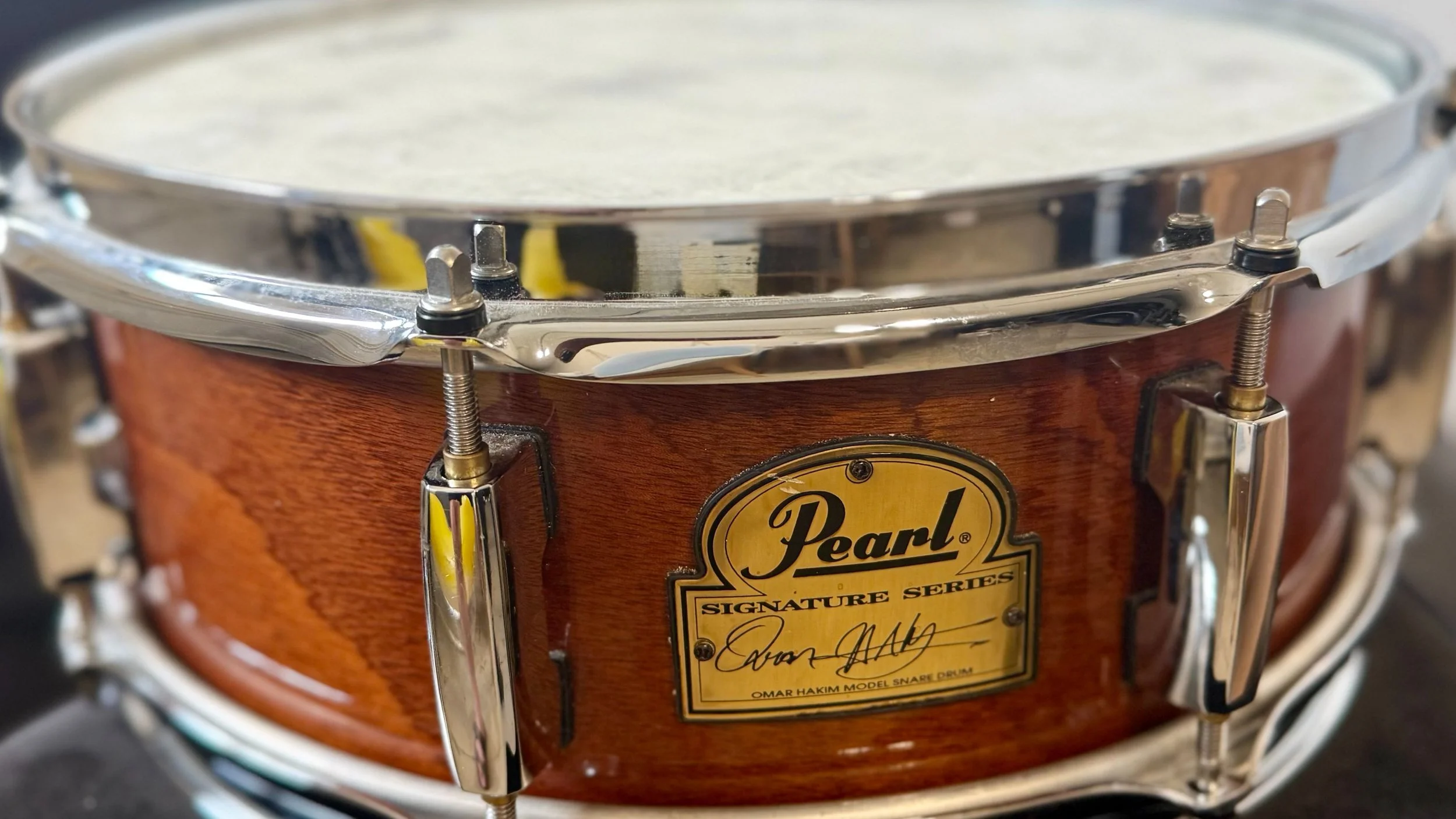Snare Drum Sounds & Head Choices
Let's be honest – tuning toms can be tricky, but getting your snare and kick drum right? That's where the magic really happens. These two drums are the heartbeat of every song. They hold down the backbeat, drive the groove forward and they can make or break your entire sound.
I've recorded plenty of songs over the years, and here's what I've learned: I spend way more time dialing in my snare and kick than anything else on the kit. Why? Because when these two drums sound incredible, everything else falls into place.
Start With the Song, Not the Drum
Here's where most drummers go wrong – they tune their snare in isolation, without considering what the music actually needs. Your snare isn't just a drum; it's the glue that holds the entire mix together.
Before you even touch a tension rod, listen to the song. What's the vibe? Is it an intimate acoustic ballad that needs a warm, woody crack? A driving rock anthem that demands an aggressive bark? A funky groove that calls for fat, wet snap?
I've literally changed snare drums (or completely retuned them) for every single recording session I've done. Not because the previous setup was wrong, but because each song has its own personality and deserves a snare sound that serves the music.
This might sound like extra work, but trust me – spending 10 minutes getting the right snare sound upfront will save you hours of fighting with EQ and processing later.
Head Choice: Your Secret Weapon
Once you know what sound you're chasing, picking the right batter head becomes your first major decision. Ask yourself these key questions:
Do you need wide-open ring and sustain?
Want something dry and controlled?
Looking for fat and punchy?
Here's my go-to strategy: always start with a coated head on the snare batter. From there, I keep 2-3 different snares (with different heads on each) ready to swap in depending on what the music demands.
My Three Essential Snare Heads
Remo Coated Ambassador: This is my "Swiss Army knife" head. It's a medium-weight, single-ply 10mil head that gives you an open, bright, resonant sound with a warm attack. Perfect for when you need versatility and that classic snare tone.
Evans Genera HD Dry: These are cool. HD Dry heads have a semi-defined attack, with short sustain and a bit less brightness than standard HD heads. This coated head also features Level 360 Technology.
Remo Emperor X Coated: When I need aggression, this is my weapon of choice. The Emperor X Coated features focused mid and low tones with Xtreme durability. Constructed with 2-plies of 10-mil Coated films with a 5-mil Bottom Black Dot.
Having these three options gives you a wide palette to work from. Different songs, different heads. It's that simple.
Don't Forget the Bottom: Snare Side Heads Matter
Here's something a lot of drummers overlook – the snare side head (that thin head on the bottom) has a massive impact on your overall sound. This isn't just some afterthought; it's crucial to how your snare responds.
For most situations, I prefer a very transparent snare response, which means going with the thinnest resonant head you can find. Why? Because thinner heads give you more articulate rolls and ghost notes. They let every subtle detail of your playing come through.
My standard recommendation is something like the Evans Snare Side 200 OR the Remo Ambassador Snare Side – they're specifically designed for the bottom of snare drums and gives you that crisp, responsive character that makes everything from ghost notes to rimshots sound articulate and clear.
The Real-World Approach
Drum tuning is an art form, and like any art, it gets easier with practice. But here's the thing about snare tuning specifically – there's no magic formula or universal "perfect" setting.
What works for a jazz ballad will sound terrible on a metal track. What sounds amazing in your practice room might get lost completely in a full band mix. The key is developing your ear and building a toolkit of sounds you can pull from.
Start with good heads, understand what each one brings to the table, and then let the music guide your decisions. Your snare should serve the song, not the other way around.
Your Next Steps
Next time you're getting ready to play or record, take a few extra minutes with your snare setup. Listen to the music first, think about what it needs, then make your head and tuning choices accordingly.
Remember: getting it right at the source beats trying to fix it in the mix every single time. Your snare is worth the extra attention – it's often the difference between a good drum sound and a great one.


